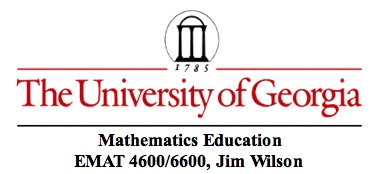

A young man was going through the attic of his grandfather's house and found a paper describing the location of a buried treasure on an particular Island. The note said that on the island one would find a gallows, an oak tree, and a pine tree. To locate the treasure one would begin at the gallows, walk to the pine tree, turn right 90 degrees and walk the same number of paces away from the pine tree. A spike was to be driven at that point. Then return to the gallows, walk to the oak tree and turn left 90 degrees and walk the same number of paces away from the oak tree. Drive a second spike in the ground. The midpoint of a string drawn between the two spikes would locate the treasure.
The young man and his friends mounted an expedition to the island, found the oak tree and the pine tree but no gallows. It had been eliminated years ago without a trace. They returned home with the map above and no treasure.
Show them where to look for the treasure.
Try assuming an arbitrary location for the gallows and use GSP to construct the location of the two spikes. Now move the location of the gallows. What happens? Why?
Click here for a GSP file with the map of the Island. Use the GSP file to construct the location of the treasure for an arbitrary point on the Island for the gallows. Then drag the point for the gallows to a different location. Observatons?
HINT for Geometric Proof: For an arbitrary point for the Gallows, construct right triangles to represent the directions. Construct the line determined by the two trees and drop perpendiculars to that line from the gallows and from each of the stakes at the other acute vertices of the right triangles.
See Gamow, George (1947). One Two Three . . . Infinity: Facts and Speculations of Science for a presentation of one version of this problem. Gamow’s solution uses a presentation of complex numbers. Click HERE for an excerpt from Gamow.
Libeskind, Shlomo (2008). Euclidean and Transformational Geometry: A Deductive Inquiry presents 5 different approaches to this problem using different sets of geometric tools. The problem is presented inside the front cover and on the title page of the book.